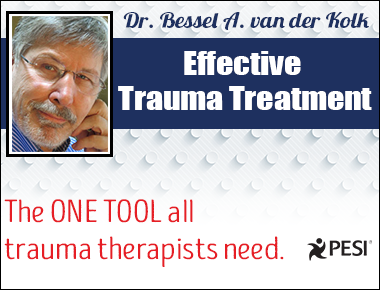Blogs and Free Resources
Here at ∫⁄¡œÕ¯, our mission is to provide professionals like you with FREE practical and valuable tools, strategies,
and resources to assist with the great work you do. Find expert tips, helpful worksheets, demonstration videos, CE, news,
and more here. Happy learning!

Trauma-Informed Meditation
It’s important to understand that traumatic experiences can significantly affect our perceptions and our sense of self, and can sensitize us to sensations, thoughts, and emotions. Fortunately, there are helpful ways to ensure that meditation instruction is trauma-informed, with an emphasis on grounding and physical and emotional security.

The Rise of Suicide and Trauma in Teens
How "13 Reasons Why" Missed the Mark
Whether you find the show compelling or troublesome, one thing is certain: We need to talk about the rise of teen suicide and trauma in kids and teens.¬ÝThat‚Äôs why we created a free, one hour online CE seminar¬Ýdesigned for clinicians, educators, and even parents to learn how to talk about suicide and mental health with teens. Read more to get instant access...

Video: Installing Resources
An Attachment-Focused EMDR‚Ñ¢ In-session Demonstration with Dr. Laurel Parnell
In this free, short video, Dr. Laurel Parnell, leader and innovator in the field of EMDR, shows you how to prepare your client for safe and effective trauma treatment.

Trauma Survivors and Self-Care
11 Practices to Promote Wellbeing
How can you help your clients work on increasing acts of self-care? Keeping in mind that self-care can manifest in different ways, consider suggesting these 11 practices as "homework assignments" to promote wellbeing...

Dr. Bessel van der Kolk Demonstrates the Position of Joy
When the body is frozen in a position of terror, it's not possible to feel joy ... BUT in contrast, when the body is in a position of joy and openness, it's not possible to feel terror. In this short video, Dr. Bessel van der Kolk demonstrates the Position of Joy and shows you how it changes the way you take in emotions.

Lizard Brain: How it impacts EVERY trauma treatment plan
...and what you can do about it
When a child with behavior challenges enters our office, we instantly go into teach mode to tell them how to change their behaviors. Why? Because we don't know what else to do.
But the child's behavior doesn't improve. It's not because they're willful, or bad, or even because they don't care. It's because the lasting impacts of trauma have the children in your practice stuck in "lizard brain." In this short video, I explain why lizard brain impacts every trauma treatment plan you create...

VIDEO: Bessel van der Kolk on Effective Trauma Treatment with EMDR
Trauma is about horror. A horrendous reality that you don't want to remember...
Our clients are often dealing with the unspeakable. Are you using tools that promote healing, or are you re-traumatizing the people who've come to you for help?
Listen to this fascinating case in this free short video —and learn insights on the ONE TOOL all trauma therapists should have.

Bessel van der Kolk's Trauma Treatment Discovery
For 40 years, as both a researcher and a clinician, Bessel van der Kolk, M.D., has studied those living with trauma. Among them were soldiers, torture victims, child abuse survivors, and many others. What has he determined after years of research?

Yoga for Trauma Treatment: 3 somatic interventions
When you use trauma-sensitive yoga as a therapeutic intervention with your clients, part of your role is to monitor the state of your client's autonomic nervous system, and to use somatic interventions when they need to bring it back into regulation. Here are 3 somatic interventions you can use with your client.

Putting the Pieces Together: Janina Fisher's perspective on the history of trauma treatment
Twenty-five years ago, who would have thought that the experience of joy had a place in trauma treatment? We began with the belief that excavating dark and unspeakable horrors would set trauma survivors free. But in this new age of trauma treatment, we aim to help our clients find the light-or at least to find their bodies, their resources, and their resilience.

